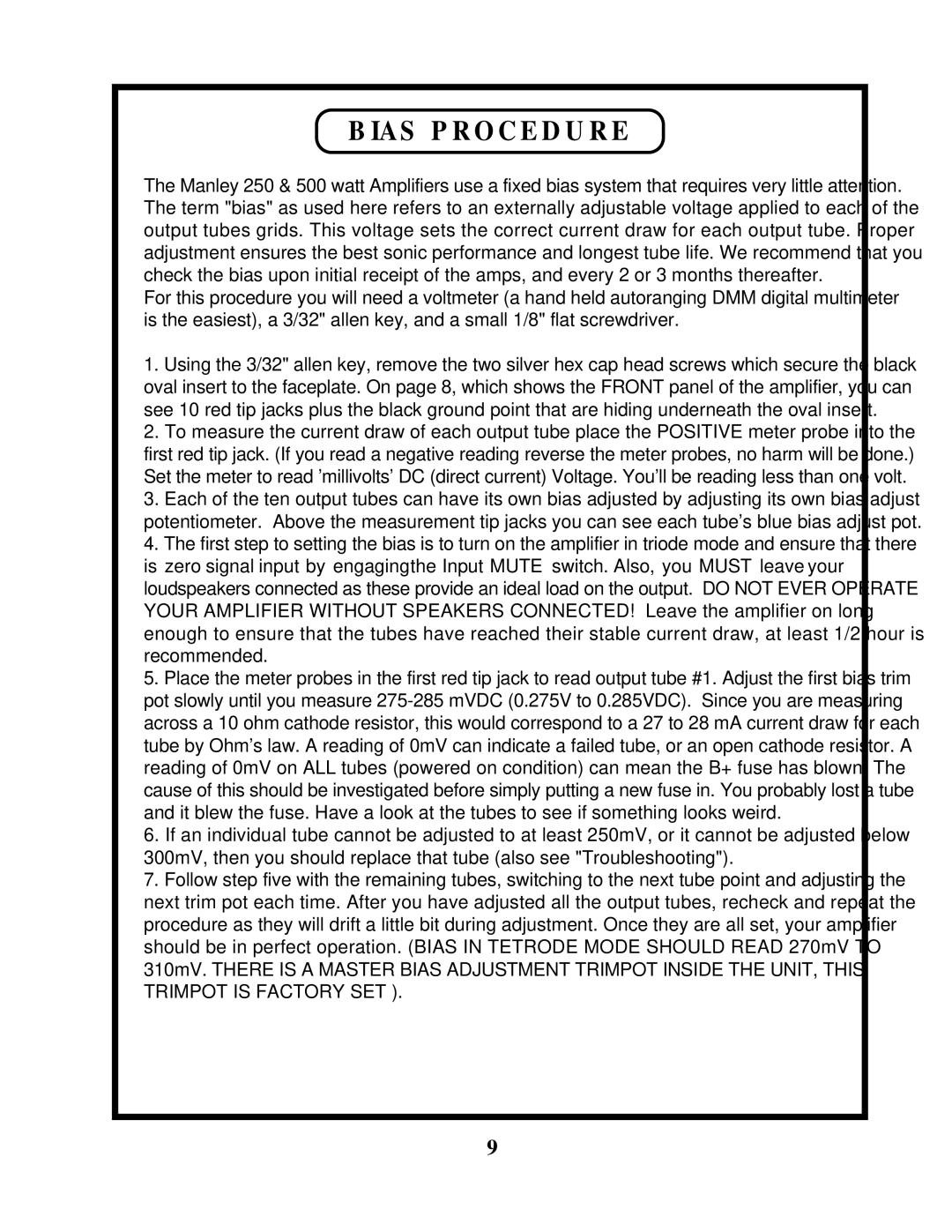AMPLIFIERS specifications
Manley Labs, a renowned name in high-fidelity audio equipment, has established a reputation for its premium amplifiers, celebrated for their exceptional sound quality and innovative design. With a commitment to craftsmanship and the integration of cutting-edge technology, Manley amplifiers cater to audiophiles and professionals alike, delivering a listening experience that is both immersive and authentic.One of the hallmark features of Manley amplifiers is their use of high-quality vacuum tubes in many of their models. The warmth and richness that tubes impart to the audio signal are particularly appealing to music lovers who seek a classic analog sound. Models like the Manley Stingray and the Manley 300B offer a distinctive tonal character, allowing musicians and listeners to experience the nuances of recordings as intended by the artists.
In addition to tube technology, Manley amplifiers frequently incorporate advanced solid-state circuitry, striking a balance between traditional warmth and modern reliability. The Manley Reference Amplifier exemplifies this hybrid approach, featuring a robust power supply and precision engineering that ensures a clean, dynamic sound. This versatility allows the amplifiers to perform beautifully in various listening environments, from home setups to professional studio applications.
Manley Labs is also notable for its attention to build quality. The amplifiers are crafted in the USA, utilizing high-grade components and rigorous quality control processes. This commitment to craftsmanship means that every unit is built to last, ensuring long-term reliability and performance. The aesthetic appeal of Manley amplifiers, with their distinctive vintage-inspired designs and premium finishes, further enhances their desirability.
Another key characteristic of Manley amplifiers is their versatility in handling various types of audio signals. Models like the Manley Neo-Classic 300B can accommodate both low-impedance and high-efficiency speakers, making them suitable for a wide range of setups. Additionally, features such as customized input and output transformers help to optimize the performance for different audio sources.
In conclusion, Manley Labs amplifiers embody a blend of vintage charm and contemporary engineering. Their proprietary tube designs, robust solid-state options, and unwavering quality make them a standout choice for anyone seeking an exceptional audio experience. Whether in a casual listening room or a high-end studio, Manley amplifiers promise to deliver richness, clarity, and a connection to the music that transcends the ordinary.

